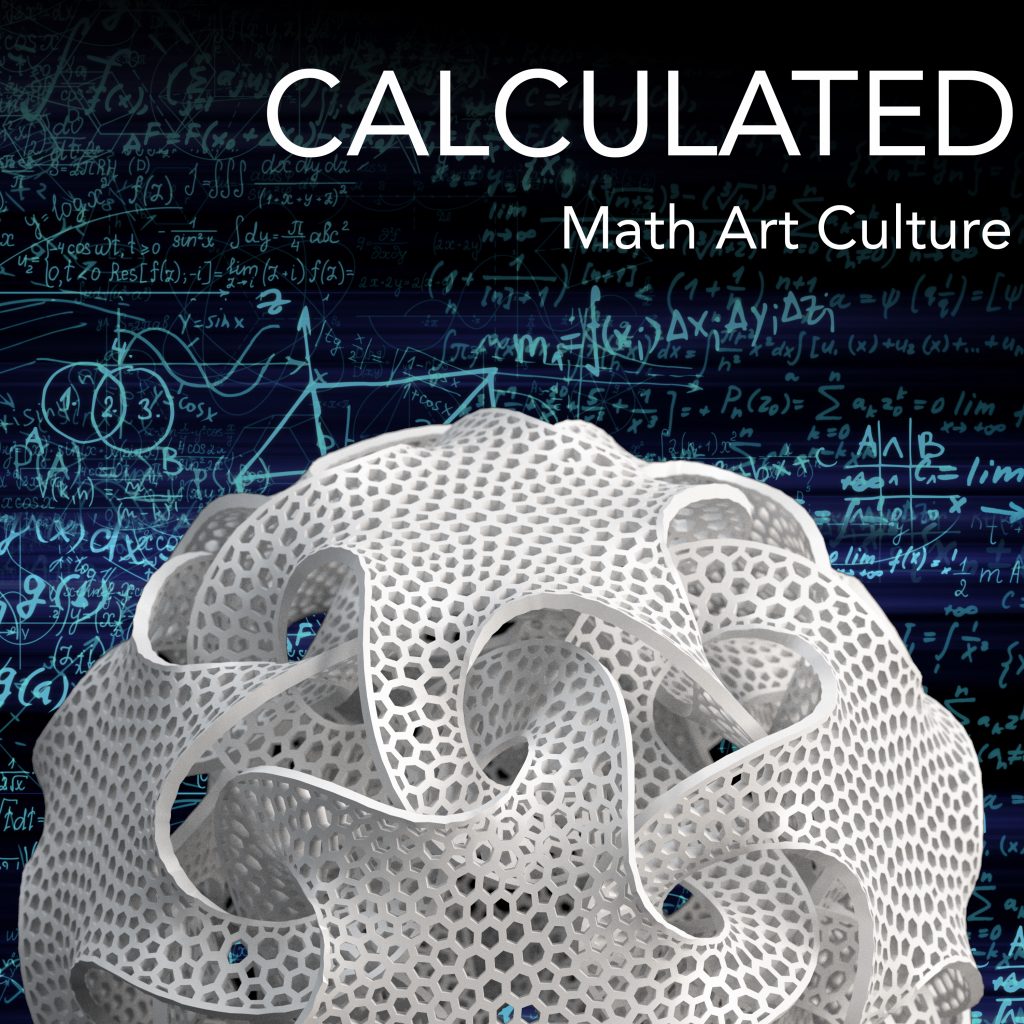In this series of posts, we’ll be featuring mathematical podcasts from all over the internet, by speaking to the creators of the podcast and asking them about what they do.
We spoke to freelance maths and science writer Stephen Ornes, about his podcast Calculated.

Podcast title: Calculated
Website: calculated.truthbeautyequations.com
Links: Apple – Stitcher
Average episode length: 20-25 minutes
Recommended episode: Episode 2: Pi is Dead! Long Live Pi!
What is your podcast about, and when/why did it start?
It’s a podcast collection of stories about people at the interaction of math, art, and culture. I launched it last year on Pi Day and had a short, 3-episode first season. It was tied in to the publication of my book Math Art: Truth, Beauty, and Equations, which highlights the work of artists who are inspired by math. After writing the book, I had a lot of material left and stories I still wanted to share.
A podcast seemed like a perfect medium because it allows the listener to hear people telling their own stories. I write, record, edit, and produce the podcast myself, in a makeshift studio in my home office.
Who is the intended audience for the podcast?
The math-curious, including mathematicians, math teachers, people who already see the beauty in math, people who suspect math can be beautiful but have been turned off the subject, and people interested in unusual modes of creativity.
What is a typical episode like?
Each episode is about 20-25 minutes, and I think of them has having three separate parts that spill over into each other and are complementary, in terms of the way they approach the subject. I released 3 episodes bi-weekly last year, and will be releasing the next 3 starting in April 2020.
Why should people listen to Calculated?
People should listen because it’s sort of another access point to the imaginative, creative, and inspirational side of math. My podcast doesn’t do a lot of heavy-lifting to explain proofs and advanced ideas; instead, I focus primarily on stories about people who make unexpected discoveries at the intersection of math, art, and culture. I think a lot about plot, tension, and story construction, and where I want my listener to go through the course of a single episode.
At the same time, I do take the time to explain the math behind these ideas, admittedly at a high level, to show why they’re beautiful. I have a master’s degree in applied math, but I’m a writer, not a practicing mathematician. (As I tell my interview subjects, I can speak the language of math, but I may not be able to do anything original with it…)
There are so many great math podcasts out there. I’ve really been enjoying Steven Strogatz’s new one and My Favorite Theorem by Evelyn Lamb and Kevin Knudson, for example, and the perspective that a professional mathematician can bring.
What are some highlights of the podcast so far?
Edray Goins tells the story of the Indiana Pi Bill in the second episode, and I think he’s great. I worked hard to showcase the story and preserve his voice in the podcast, while at the same time folding it into the larger topic of what I kind of think of as pi culture. It was a challenge because the recording wasn’t great, but I was happy with the result.
John Sims, who’s featured in Episode 1, is an imaginative and spectacular storyteller with a great backstory about how he connected with Amish snowbirds in Sarasota, Florida, to make quilts based on the digits of pi. John is featured in the first chapter of my book, and I’m taking my whole family to Sarasota to visit him for a Pi Day event this year. That episode won the Miller Audio Prize from the Missouri Review, a literary journal, which was a terrific honor. I think it shows that it’s possible to tell math stories to a general audience.
What exciting plans do you have for the future?
I’m excited to see what people think of Episode 4, which came out at the end of April 2020 and dives into math poetry. (I suggested April should be math poetry month in an essay I wrote for The Last Word on Nothing.) I’m a big fan of math poetry and wanted to release this episode last April but didn’t quite have it finished in time. I also have episodes planned about minimal surfaces (soap bubbles), and religion and math.